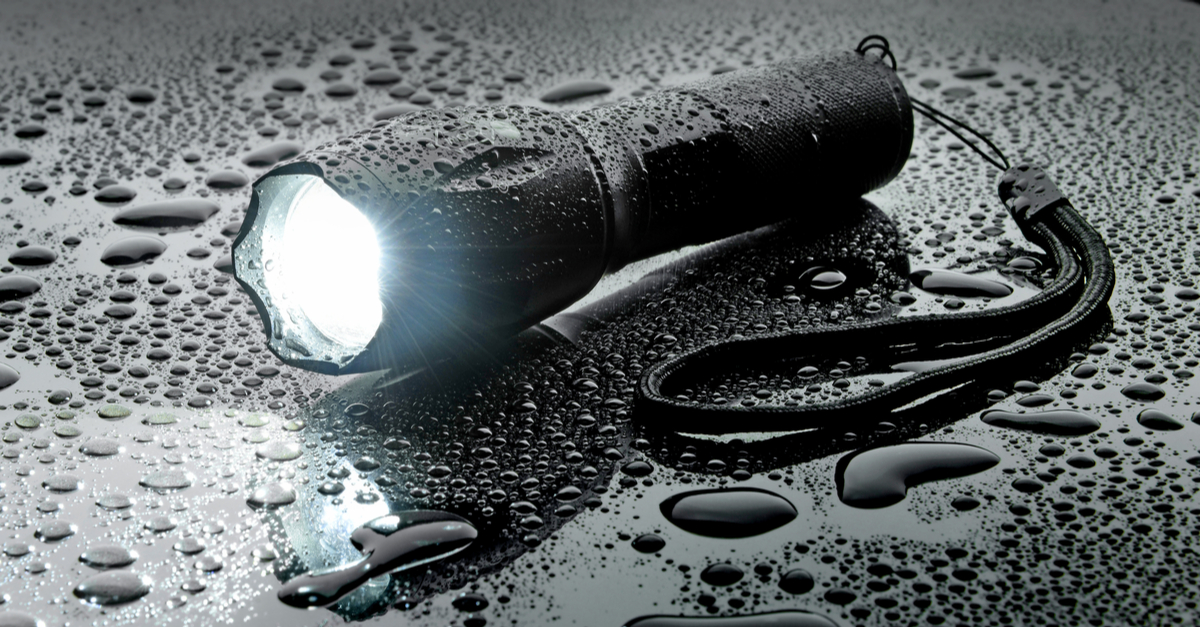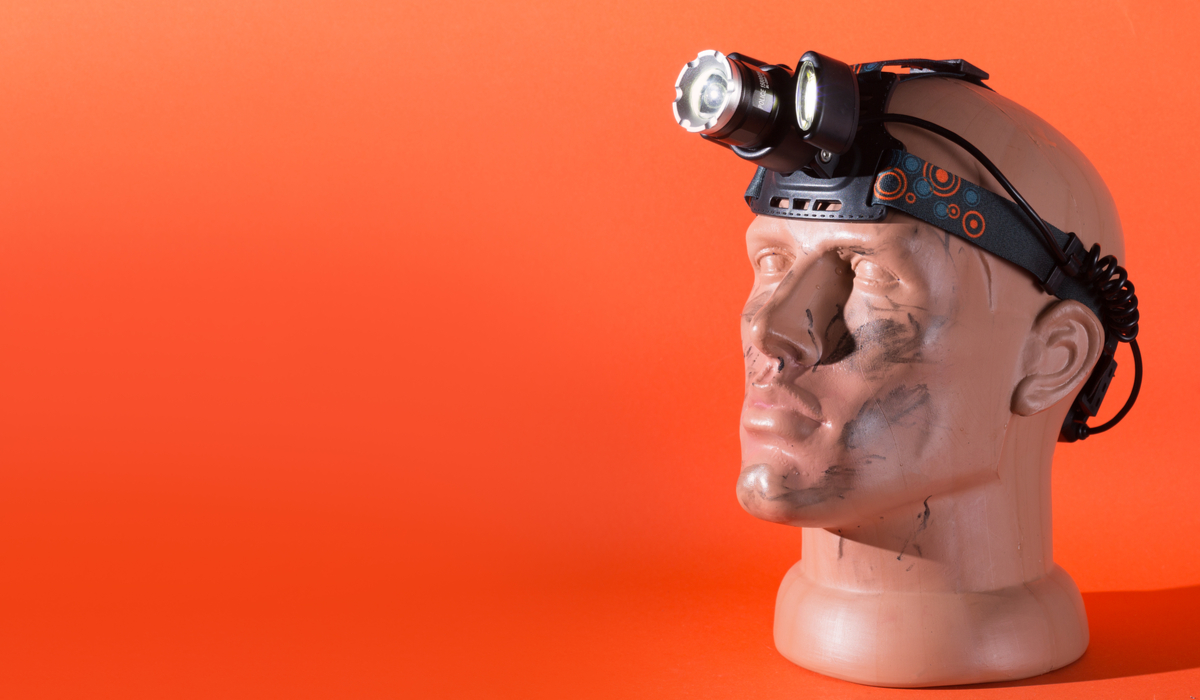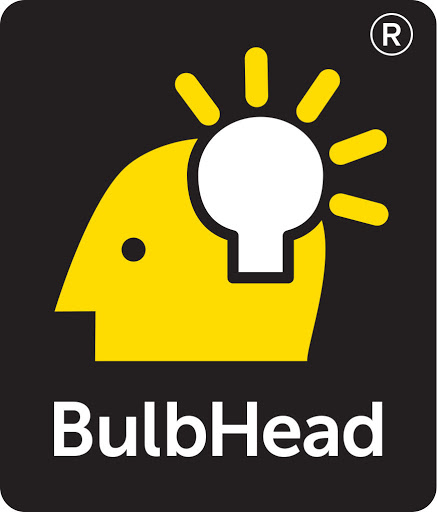Flashlights. We all know them, and we all love them for the light they provide in the darkest of times. Whether it’s using them at sleepovers to create shadow puppets or to see the surroundings of your tent while camping with the family, flashlights are important utility tools everyone should own.
There are more options than you may think when deciding what kind of flashlight to purchase, and it’s often good to have more than one lying around the house in case of emergencies. So, let’s get down to it and learn everything we need to know about the different types of flashlights!
Shining a Light on the Flashlight
Before we get too in-depth, let’s do a quick history on the flashlight. The first flashlight received a patent in 1898 after years of experimentation. Conrad Hubert is credited with the design. The name “flashlight” comes from the fleeting nature of the light produced in these models due to weak bulbs and primitive batteries.
By the 1920s, flashlights caught on and became fixtures in people’s homes. Advances in technology have led to many different types of flashlights and further advances in LED (light-emitting diode) and battery efficiency have resulted in even more options on the market.
The wonderful LED flashlight on your phone is great in a pinch, but try to remember that your phone has a limited battery, and you should always have a backup flashlight in case of an emergency. Read on to learn about all the options on the market.
Incandescent Exposure: Incandescent Flashlights
By now, you have most certainly come across these types of flashlights. These are the ones many of us think of when we picture a flashlight. They have been around for decades and are known as one of the only household items that require those giant D batteries.
These flashlights are convenient and cheap to buy, although D Batteries are expensive comparatively. For this reason, these are easy to replace if and when they break or die. These do often break, but there are much more durable options as well. Obviously, durability is tied to cost, and more expensive options come with a higher price tag.
There are many types of incandescent flashlights to consider. Utility flashlights are the most common incandescent models and generally have a lower price tag. These work well for most purposes and won’t put you out more than a few bills. Handle with care as these are on the low end of the durability spectrum.
If you don’t find yourself needing a flashlight regularly, these flashlights will be enough to get the job done. If you want something more durable or one that shines brighter, you will have to shell out a few more clams for something like a heavy-duty flashlight.
Heavy-Duty Flashlights
Heavy-duty flashlights are stronger than utility models. If you are doing activities like hunting or fishing that may require your flashlight to stand up to harsher elements, then a heavy-duty flashlight might be where you want to start. These flashlights are perfect for frequent users and won’t die as often. You still have to replace batteries regularly with these, but they will last longer. The word to keep in mind here is: reliable.
Tactical Flashlights

Tactical flashlights are yet another option. These are carried by police and military and produce a very bright light. Tactical flashlights are often quite heavy and can even be used as weapons in a pinch when you pair their weight with their ability to disorient. Likewise, they are extremely durable.
Under Pressure(ized Gas): Pressurized Glass Flashlights
Some incandescent bulbs include pressurized gas. Pressurized gas flashlights are powered by gasses such as xenon, halogen, and krypton and can burn brighter than others while burning out slower as a result.
These types of flashlights are cheap, durable, and powered by D batteries. These are usually seen in emergency situations and can be found in most homes across the country. It is always good to have one around the house.
You Down With L.E.D? LED Flashlights
LED flashlights are becoming more and more popular as time goes on. These bulbs do not produce heat and last much longer than incandescent. These flashlights are durable and can withstand their fair share of punishment. The bulbs last longer and offer better quality light than incandescent.
These LED flashlights aren’t as cheap as incandescent, but the product is usually superior. These are more on par with heavy-duty incandescent so weigh your options before choosing. It is also important to know that LED lights have a white light with a blue hue compared to incandescent ones that sports a white light with a yellow hue.
Some models have adjustable focus, different beam modes like high, medium, low, S.O.S, and even strobe if you’re trying to party! (Or more likely, disorient). They can be found in strong aluminum cases as well as plastic and can be shock and water-resistant.
HIDing in Plain Sight: High-Intensity Discharge Flashlights
High-intensity discharge flashlights (HID) emit an extremely bright light. You know these lights from those times you were driving on a dark country road, and some punk tailgated you while you quietly wondered if there was a way to turn other people’s headlights down?
The portable version of these lights makes for great flashlights, though. If you want a flashlight that is capable of lighting up a large area, look no further. These work by sending an electrical current through a ball of ionized gas. They are very different from the other types of lights we have covered. For these reasons, they are also less common and more expensive.
The intensity of this kind of light is unmatched, however. If you live in a place devoid of streetlights or in an area that may be referred to by some as “the boonies,” HID flashlights may be worth checking out. They are often rechargeable and weather resistant. These should be considered for anyone who lives in a dark area and often needs to make trips outside.
Solar Opposites: Solar-Powered Flashlights
The environment is a concern for many people these days, and many consumers are looking for alternatives to traditional power sources. Solar-powered flashlights are the most environmentally-friendly options for those looking to be more green. These are convenient and can have many applications.
As expected, these flashlights will be weaker than the other options we have covered so far. They will not compare to LED or HID but should be up to snuff with most incandescent. They are also pretty affordable. Some have an added hand crank to generate light if the charge is gone. These are one option for those trying to build a survival pack as they are self-sustaining, and you won’t have to worry about finding a power source. If the sun burns out, though, this may be a poor choice. Just something to keep in mind!
Headlamps (or Tactical Hats)

Okay, no one calls them tactical hats, but that is essentially what they are! The obvious advantage of these flashlights is that your hands are now free for hand-to-hand combat or to carry things. The hold-the-flashlight-in-your-mouth technique can work in a pinch, but for those who need to use their hands frequently in the dark, headlamp flashlights are best.
Common use case: walking your dog at night! These (and neck versions) are perfect when trying to control a puppy in training or just hold the leash while scrolling on your phone. These headlamps strap onto your head and allow for movement and use of both hands. Usually, headlamps will be equipped with an LED light proving to be very bright and long-lasting.
Green Lanterns (Or Just Normal Ones)
They come in other colors, too! Lanterns are more than just the traditional flame lit we all know and love. These days, LED lanterns have become commonplace and work just like LED flashlights. The biggest difference and benefit is you can set these down on a surface and they will provide 360-degree light.
These are best used while camping or when you lose power.
Shake It Up Baby Now: Shake Flashlights
Shake flashlights are another great doomsday purchase. These don’t run on batteries but instead use magnets that cause a reaction when shook, emitting light. The issue with these is that the light provided is dim. They are great to own, though, because they will never run out of power as long as you are able to shake them and are not expensive.
U Should B Charging These Flashlights: USB Flashlight
USB charging flashlights are a newer technology that works like charging your phone. The battery is built-in and gets power from a simple USB phone charger. Best to charge the flashlight and store it away in case you lose power because then you will have no other way to get power to it.
These are bright flashlights but not inexpensive. They will also last for a long time.

Trackbacks/Pingbacks